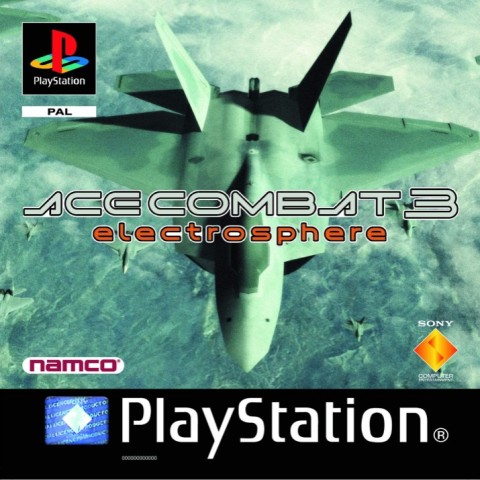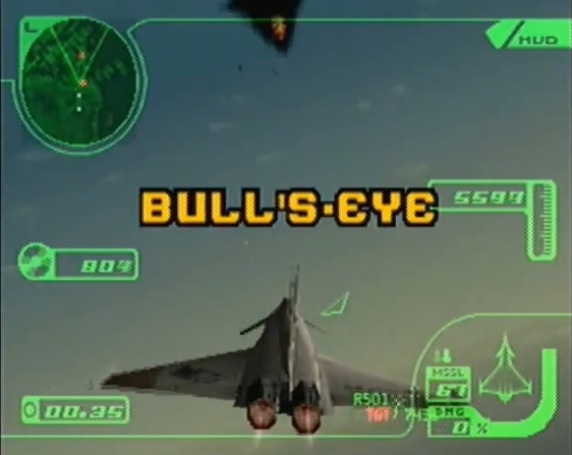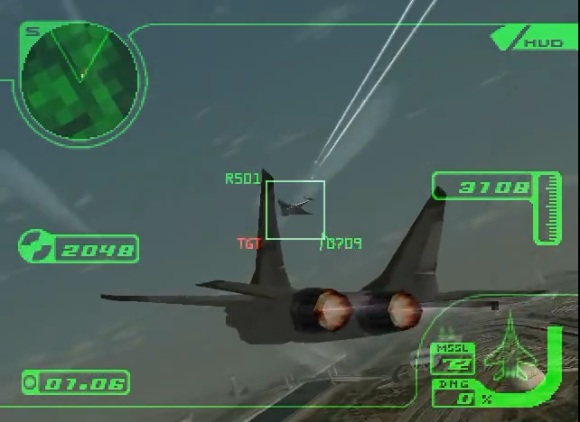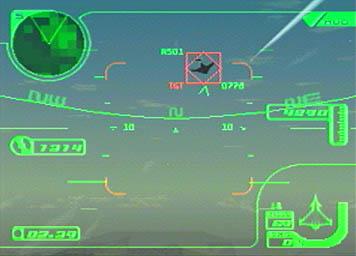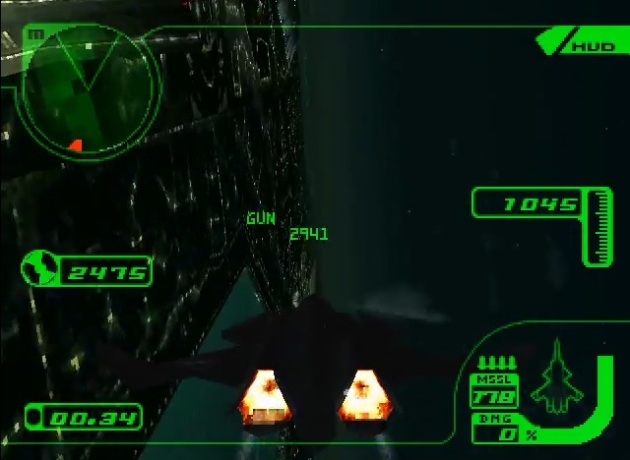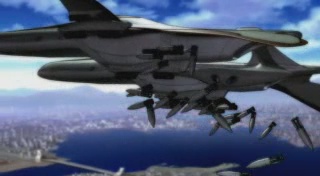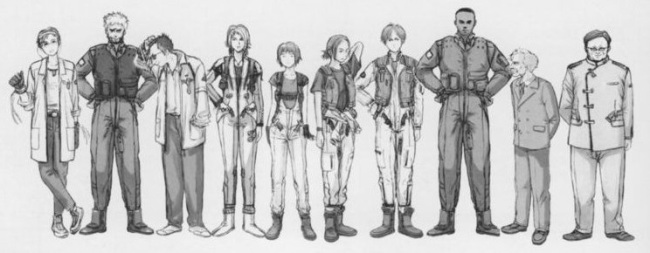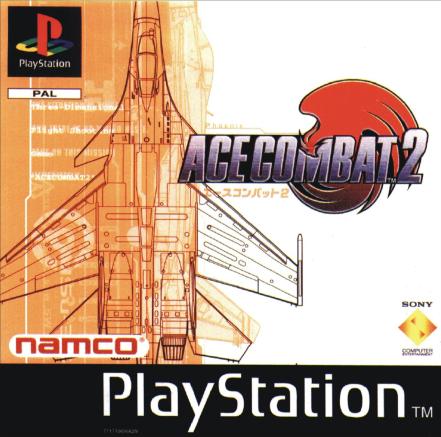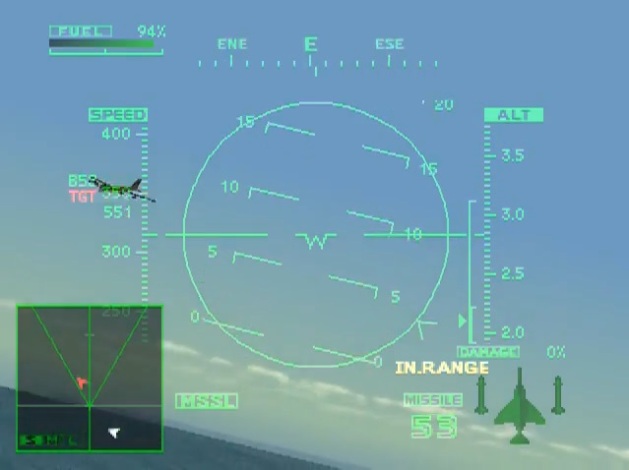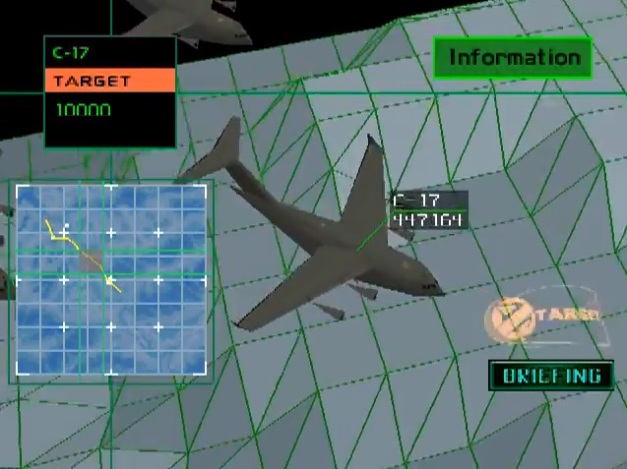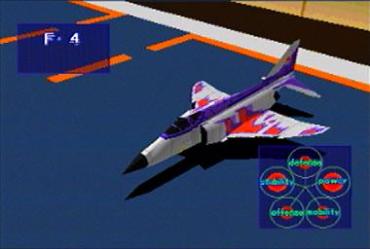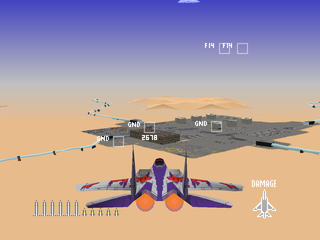Completing the reviews of the three Ace Combat games on the original Playstation Tony Wilkins reviews the final installment and discusses the sad story around it’s European and North American version.
Ace Combat 3 Electrosphere was launched in Japan in 1999 with North American and European versions hitting the shops a few months later in early 2000. Since then it has become perhaps the most controversial title among fans of the franchise outside of Japan. An aggressive marketing campaign throughout 1999 promised that this was going to be a quantum leap over the well received Ace Combat 2 and in many ways it was. I shall go in to detail as to why it is perhaps the most notorious of the three PSX Ace Combat games later. Firstly, let’s review Ace Combat 3 in it’s PAL format as I had it.
Everything about this game was a departure from the previous two titles. Instead of being a mercenary pilot fighting rebels in a semi-realistic world the story is set in 2040 A.D. and the player is a member of a military police force known as U.P.E.O. (Universal Peace Enforcement Organization). The job of the U.P.E.O. is to maintain peace between two super-corporations known as Neucom and General Resource who both have vast armies and are in a state of ‘cold war’. Recently however another faction has appeared, the mysterious Ouroborus terrorist organization, that has its own agenda.
Gameplay is vastly superior to the previous two titles. This was the first game to feature the 360 degree camera angle which meant you didn’t spend lots of time with no enemies on your screen while you chased an arrow as was the case in the previous games. It also meant you could explore this futuristic world more fully providing you used the Dualshock controller. The engine was changed also to give each aircraft a more distinctive feel. You could also perform tail slides for the first time which better replicated real aircraft although you have to be mindful of this during low level flying otherwise you go slamming in to the ground. You also had some weapon options to equip your aircraft which was a welcome new feature to the franchise.
It is clear that in 2000 the PSX was starting to show its age and looking at some of the ground scenes of this game you can see that Namco were really reaching the limits with what the PSX could do. At altitude the ground looked great but that quality deteriorates as you get down lower with very little curvature in the buildings and landscapes. In truth this is trying to be a Playstation 2 type game but within the limits of the PSX. The aircraft are beautiful however with a mix of modern and futuristic types and unlike in the previous games there is a more distinct feeling between them. The old HUD screen is gone replaced by a far more futuristic one that takes full advantage of the 360 degree capability.The game did include a small number of beautifully rendered cutscenes.
On the surface then this game has more or less everything going for it. So why is there such disdain from western fans? Well what it boils down to is that what we got in the west was a bare shell of the game. The Japanese version of the game is a fully interactive affair with the player making choices in the battle that affect the outcome of the game. As such there are not just a greater number of missions but there are alternate endings. For most western fans however this is still not what is missed the most.
The Japanese version was more than just a game where the player made decisions. It featured numerous animated cutscenes produced by the world famous Production I.G. studio responsible for the Ghost in the Shell movies and series. The whole story/game feels like it could be a part of that world as well as the Ace Combat universe. The game even came with a book outlining the histories of the characters. There was so much to this story and we missed it over here.
Reasons that Namco gave for their decision to cut all this out of the western versions are the worst kind in that they do make sense for the most part. Firstly, Namco knew that the PSX days were nearly up as the Playstation 2 was coming out in 2000 and therefore they decided not to go to the expense of translating the whole game. There were also some unspecified legal obstacles that didn’t seem worth the hassle and these are presumably with Production I.G. as this was the only collaborative effort of the series. Namco also seriously underestimated the reception the game would receive in the west and probably knew they had made a mistake afterwards as Namco did acknowledge the disappointment of western fans. A real shame.
Ok – in summary. This game was a vast improvement over the much loved Ace Combat 2 with with its physics and options. Even in its limited PAL format the game is very fun and probably one of the most challenging of the entire franchise but not in a frustrating way like Air Combat was. Sadly this game’s production history has mired its enjoyment because you know there is so much more out there for it that unless you speak Japanese you can’t enjoy. I wish that Namco had held off on this and instead launched it on the Playstation 2 taking full advantage of that system’s power and justifying the expense of translating it. I think it would have produced it’s own series of games set in this realm which we haven’t been able to explore since.

